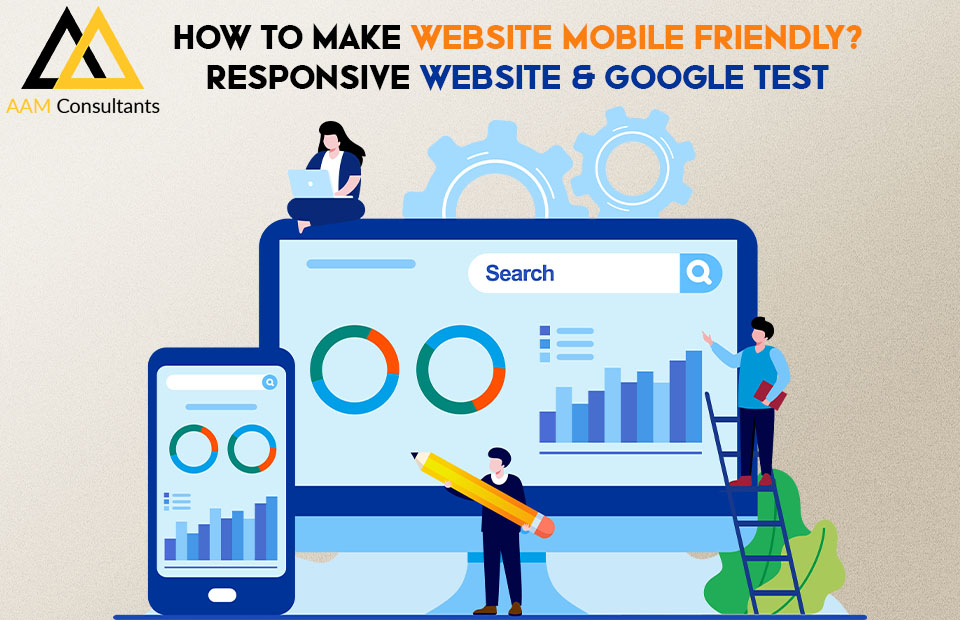A responsive website can be defined as a website that automatically detects the device being used to access it and changes its layout accordingly. It adjusts the layout of its content automatically to fit the size of your screen. It uses a web design that has been developed to resize its content on any screen size, from desktop to mobile, with just one codebase. It allows for a more consistent user experience on all devices and eliminates the need for a separate mobile version of a site.
Before we discuss how to design a mobile-friendly webpage, let us first see what it takes to have a mobile-friendly website. A website is deemed as ‘mobile-friendly’ if it requires less scrolling and has a user interface that is easy to navigate.
Many websites still come up with a desktop version of their site and then adjust the design for mobile devices. This approach often leads to poorly designed sites with cluttered, small text and/or images that are either hard to read or hard to click on. The best approach is catering your website for all types of devices, including desktops, laptops, tablets, and smartphones.
Hire AAM Consultants for link building and SEO Services.
What does a mobile-friendly website mean?
A mobile-friendly website is a website that has been developed with the user in mind. This means having the website display correctly across all devices, which includes smartphones, tablets, laptops, and desktop computers.
Some of the most important considerations for creating a mobile-friendly site are:
– simple navigation
– readable text
– optimized loading time
– content that looks good on iOS devices
Why mobile friendly websites are important?
Mobile-friendly websites are becoming increasingly important with the rapid growth of the mobile market. A website which has a responsive design and is mobile friendly will allow web visitors to view the content, without any issue, on their device of choice.
The main benefit of a responsive site is that it can be viewed by all types of browsers and devices. Another major advantage is that when people search for certain information, they can find it quickly because they do not have to go through several pages anymore.
What is the difference between mobile friendly and responsive website?
Mobile friendly websites are specifically created for the smaller screens of mobile devices like smartphones and tablets. They are designed to be responsive, which means that they can shrink or enlarge depending on how large or small the screen is.
A responsive website will be coded in such a way that it will shrink or enlarge depending on how large or small the screen is. For example, if someone is browsing your website on their phone, it will automatically resize itself so that there aren’t any empty spaces around the content.
A mobile friendly website is specifically created for smaller screens like smartphones and tablets. It can either be responsive (so it can change size) or not responsive (so the whole page just resizes).
How to make website mobile friendly?
If you are not sure if your website is mobile-friendly, there are many online tools like Google PageSpeed Insights or GUROBI that can help you find out. If you’re not sure, it’s also important to hire a great designer that can take this task on for you. If you have someone that can design and develop the site for you, it’s going to make it so much easier for you – and mean that you’re not going to struggle doing it yourself.
How to test if website is mobile friendly?
It is important for web developers to make sure that their websites are mobile-friendly. And if they’re not, the user experience will be at risk. There are various ways to check if your website is mobile-friendly or not. Google has a tool that makes it very easy for you to do so. With this tool, you can check how your site renders on different devices and browsers with just one click of the mouse.
How to make your website mobile-friendly?
As the number of people using smartphones and tablets to browse the web is rapidly increasing, it is important to make sure that your website is compatible with these devices. A responsive website automatically resizes its content based on the device viewing it. This way, the user will always get a great experience no matter what device they use. Think about making your website more friendly today by working with the right team to help you bring your ideas and designs to life.




